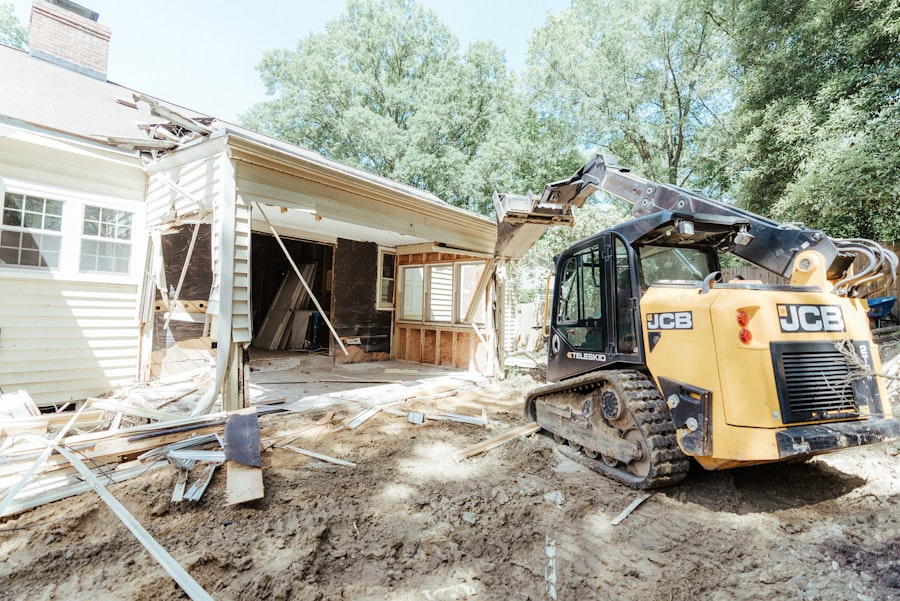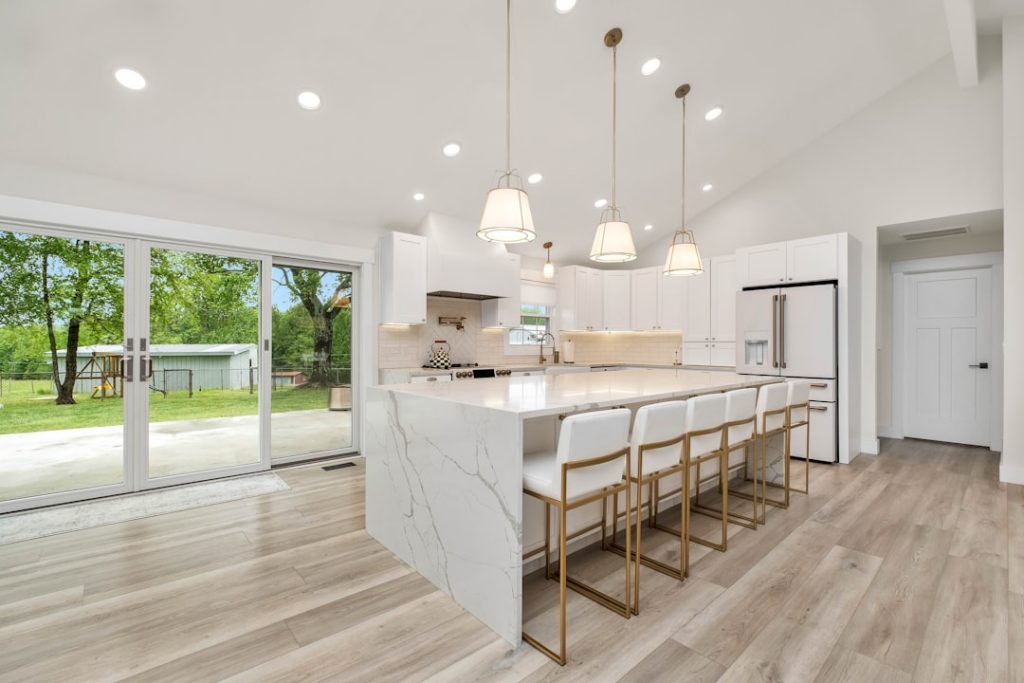Home remodeling is more than just a trend; it is a vital aspect of homeownership that can significantly enhance the quality of life for residents. The importance of home remodeling lies in its ability to adapt living spaces to the evolving needs of families. As lifestyles change, so do the requirements for space, functionality, and aesthetics.
For instance, a growing family may require additional bedrooms or a larger kitchen to accommodate gatherings, while empty nesters might seek to downsize or create a more manageable living environment. Remodeling allows homeowners to tailor their spaces to fit their current circumstances, ensuring that their homes remain comfortable and functional. Moreover, home remodeling can substantially increase the value of a property.
According to the National Association of Realtors, certain renovations can yield a high return on investment (ROI), making them financially prudent decisions. For example, kitchen and bathroom remodels are often cited as some of the most valuable improvements, with potential returns exceeding 70% of the initial investment. This financial aspect is particularly important for homeowners considering selling their property in the future.
By investing in strategic renovations, homeowners can not only enhance their living experience but also position their homes favorably in a competitive real estate market.
Key Takeaways
- Home remodeling can increase the value of your property and improve your quality of life.
- Consider your budget, timeline, and desired outcome before starting a home remodeling project.
- Research and interview multiple home remodeling contractors to find the right fit for your project.
- Popular home remodeling trends include open floor plans, energy-efficient upgrades, and smart home technology.
- Set a realistic budget and consider potential additional costs when budgeting for your home remodeling project.
Factors to Consider Before Starting a Home Remodeling Project
Before embarking on a home remodeling project, several critical factors must be taken into account to ensure a successful outcome. First and foremost is the scope of the project. Homeowners need to clearly define what they want to achieve with the remodel.
This involves assessing the current layout and functionality of the space and identifying specific areas that require improvement. For instance, if a homeowner desires an open-concept living area, they must consider which walls can be removed without compromising structural integrity. A well-defined scope helps in setting realistic expectations and prevents scope creep during the remodeling process.
Another essential factor is the budget. Homeowners should establish a clear financial plan that outlines how much they are willing to spend on the project. This budget should include not only the cost of materials and labor but also a contingency fund for unexpected expenses that may arise during the renovation.
It is advisable to research average costs for similar projects in the area to gain a better understanding of what to expect financially. Additionally, homeowners should consider whether they will finance the project through savings, loans, or credit options, as this can impact their overall financial health.
Finding the Right Home Remodeling Contractor Near You

Selecting the right contractor is one of the most crucial steps in the home remodeling process. A skilled and reliable contractor can make all the difference in achieving a successful renovation. To begin this search, homeowners should seek recommendations from friends, family, or neighbors who have recently completed similar projects.
Online platforms and review sites can also provide valuable insights into local contractors’ reputations and past work. Once potential contractors have been identified, it is essential to conduct thorough interviews and request detailed estimates. Homeowners should inquire about each contractor’s experience, licensing, insurance, and references from previous clients.
A reputable contractor will be transparent about their processes and willing to provide examples of their work. Additionally, it is beneficial to establish clear communication from the outset, ensuring that both parties are aligned on expectations, timelines, and budgets. This foundation of trust and clarity can significantly enhance the remodeling experience.
Popular Home Remodeling Trends to Consider
| Trend | Description |
|---|---|
| Open Floor Plans | Removing walls to create a more open and spacious layout. |
| Smart Home Technology | Integrating devices for security, lighting, and temperature control. |
| Energy-Efficient Upgrades | Installing energy-saving appliances and improving insulation. |
| Outdoor Living Spaces | Creating functional and stylish outdoor areas for entertainment. |
| Neutral Color Schemes | Using neutral colors for a timeless and versatile look. |
As design preferences evolve, certain home remodeling trends gain popularity among homeowners looking to refresh their spaces. One notable trend is the incorporation of sustainable materials and energy-efficient solutions. Many homeowners are increasingly conscious of their environmental impact and are opting for eco-friendly materials such as reclaimed wood, bamboo flooring, and low-VOC paints.
Additionally, energy-efficient appliances and solar panels are becoming standard features in modern remodels, appealing to those who wish to reduce their carbon footprint while saving on utility bills. Another trend gaining traction is the focus on multifunctional spaces. With remote work becoming more prevalent, homeowners are seeking ways to create versatile areas that can serve multiple purposes.
For example, a spare bedroom may be transformed into a home office with built-in shelving and ergonomic furniture, allowing for productivity without sacrificing comfort. Open floor plans that facilitate seamless transitions between living areas are also popular, as they promote social interaction and maximize natural light.
Budgeting for Your Home Remodeling Project
Creating a comprehensive budget is essential for any home remodeling project, as it serves as a roadmap for financial planning throughout the renovation process. Homeowners should begin by listing all anticipated expenses associated with the project, including materials, labor costs, permits, and design fees. It is crucial to research and obtain multiple quotes from suppliers and contractors to ensure that estimates are realistic and competitive.
In addition to direct costs, homeowners should allocate funds for unexpected expenses that may arise during construction. A common rule of thumb is to set aside an additional 10-20% of the total budget for contingencies. This buffer can help mitigate stress if unforeseen issues occur, such as discovering structural problems or needing to replace outdated plumbing or electrical systems.
By planning for these possibilities upfront, homeowners can maintain control over their finances and avoid overspending.
The Process of Home Remodeling: What to Expect

The home remodeling process typically unfolds in several distinct phases, each requiring careful attention and management. Initially, homeowners will engage in planning and design discussions with their chosen contractor or designer. This phase involves creating detailed blueprints or sketches that outline the desired changes and selecting materials and finishes that align with the overall vision for the space.
Once plans are finalized and permits obtained, construction begins. This phase can be disruptive as it often involves demolition work, structural changes, and installation of new systems or features. Homeowners should prepare for noise, dust, and limited access to certain areas of their homes during this time.
Regular communication with the contractor is vital during construction to address any concerns or adjustments that may arise promptly.
Tips for Ensuring a Successful Home Remodeling Experience
To ensure a smooth and successful home remodeling experience, homeowners should prioritize clear communication with their contractors throughout the project. Establishing regular check-ins can help keep everyone on the same page regarding progress, timelines, and any potential issues that may arise. Additionally, being open to feedback from professionals can lead to better outcomes; contractors often have valuable insights based on their experience that can enhance design choices or improve functionality.
Flexibility is another key component of a successful remodeling project. While it is essential to have a clear vision of what you want to achieve, being adaptable can help navigate unexpected challenges more effectively. For instance, if a particular material becomes unavailable or if structural issues arise during demolition, being willing to explore alternative solutions can keep the project moving forward without significant delays.
The Benefits of Investing in Home Remodeling
Investing in home remodeling offers numerous benefits that extend beyond mere aesthetics or increased property value. One significant advantage is improved functionality; renovations can transform underutilized spaces into practical areas that better serve daily needs. For example, adding an island in a kitchen not only enhances cooking efficiency but also creates a social hub for family gatherings.
Additionally, remodeled homes often provide enhanced comfort and energy efficiency. Upgrading insulation, windows, and HVAC systems can lead to lower energy bills while creating a more pleasant living environment year-round. Furthermore, modernizing outdated features can improve safety standards within the home; for instance, replacing old wiring or plumbing systems reduces risks associated with fire hazards or leaks.
Ultimately, home remodeling represents an opportunity for homeowners to invest in their living spaces actively. By making thoughtful improvements tailored to their unique needs and preferences, they can create homes that reflect their lifestyles while increasing both enjoyment and value over time.



